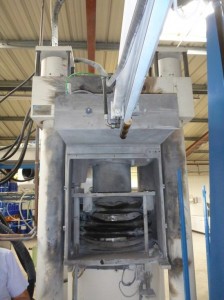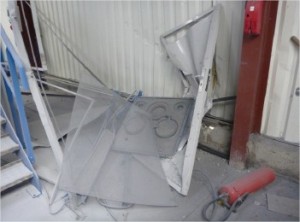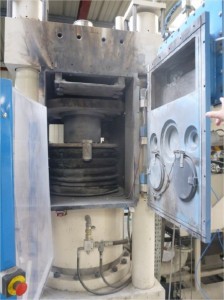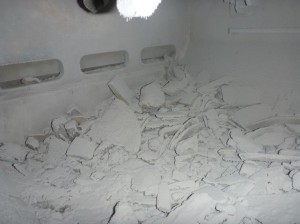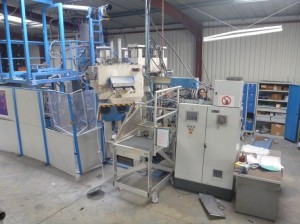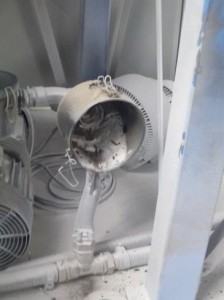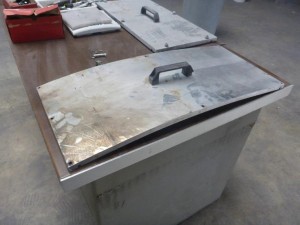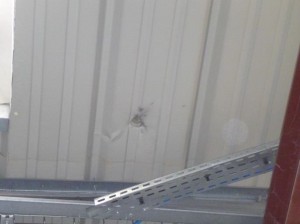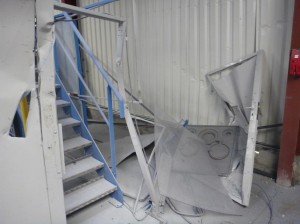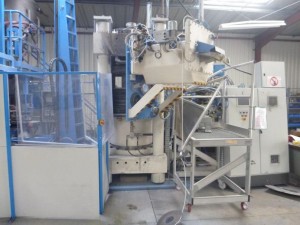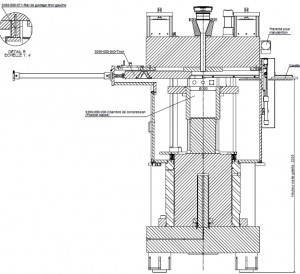An explosion and fire occurred at around 8:50 a.m. at a solid hydrogen storage company. The accident occurred while a press used to compact magnesium hydride and natural graphite into pellets was being reassembled following maintenance. Three employees were injured; one suffered slight burns and the two others has ruptured eardrums. The employees extinguished the flames in the casing of the vacuum pump and the press airlock before the fire-fighters arrived. Property damage was primarily limited to objects immediately adjacent to the press. The front and rear doors of the press were blown off. The fasteners on the front door were ripped off and the rear door was blown off. The catwalk of the press was damaged. The manway of the proportioner used to mix powder in the crushing chamber was blown off when the filter housing of the vacuum pump exploded. The wall of the shop located behind the press as well as the lighting, valves and pipes were damaged. However, the structure of the building was left intact. The 16 employees were temporarily laid off pending the identification of the cause and circumstances of the accident. The pellet production line was shut down for several months. Industrial safety bodies and companies specialised in explosive materials and hydrogen were contacted. The decision to build an extension to the shop was pushed back.
The manufacturing of the pellets created dust inside the vacuum chamber. This dust built up on various areas of the press (bellows, front and rear of the press, valve, stripper, inside of the airlock and dispenser). To prevent excess powder build-up, the press was cleaned three times a day at the end of each shift. The explosion occurred after the press had been cleaned and when the employees had placed the pressing cavity under vacuum before the injection of argon.
The report issued by one of the specialist firms postulated an explosion of the magnesium hydride and/or hydrogen dust inside the pelleting chamber containment. Hydrogen may have been desorbed at ambient temperature from the magnesium hydride powder. Moisture in the air can produce this phenomenon. A failure of the vacuum system after the doors of the press were closed may have caused the powder mixture to become suspended and form a confined cloud that spontaneously ignited in contact with air. The firm recommended conducting a variety of tests to establish the characteristics of the powder mixture (stability, etc.) and substantiate/disprove the assumptions made.
Although the operator was aware of the explosivity and danger of finely divided and activated magnesium hydride, two incidents with serious consequences had already occurred in the past. The first, in 2010, involved an experimental powder mixture that caught fire, burning the arm of a technician. The second occurred in 2012, when the press was cleaned with a vacuum cleaner although this was prohibited. Explosivity characterisation analyses conducted following these incidents confirmed that the material was highly explosive.
After this latest accident, the shops were cleaned and rearranged (separate testing and storage areas, etc.) and employee training was improved. The operator also plans to reorganise production by adding more maintenance staff, setting up hydride teams (furnaces and pelleting) and assembly teams (cartridges and tanks), creating testing units (NDT, etc.) and adding a compliance and monitoring team to the HSE department. It also plans to overhaul the documentation and quality procedures. Lastly, it plans to create a simpler and safer magnesium hydride pelletising line (and ultimately automate it) and revise the production conditions for the various machines.



